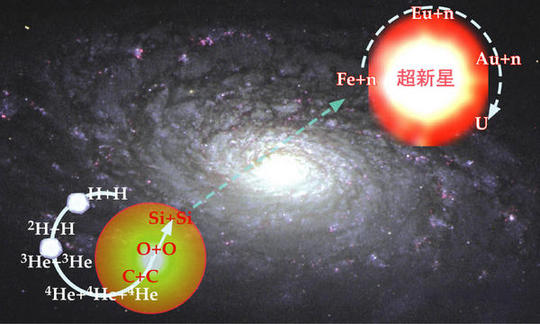
When we look at the universe in its entirety, we see that the fundamental objects distributed throughout it are galaxies. A galaxy is a system of stars and gas bound by gravity in a dark matter halo. First generation galaxies are thought to have formed approximately 1 Gyr after the Big Bang, and galaxies have emerged through the present time, 13.7 Gyrs after the Big Bang. Galaxy structure formation has a long history, and occasionally includes processes such as galaxy mergers. In a galaxy, numerous stars are continuously undergoing birth and death, resulting in a very dynamic environment. In particular, the death of massive stars induces extremely energetic explosions in the form of supernovae or gamma-ray bursts. Moreover, heavy nuclei created by nuclear fusion deep within stars are ejected back to the interstellar medium during supernova explosions, later incorporated into the next generation of stars. Eventually, these heavy elements are the source of material accumulated into dust grains and planetesimals - the building blocks of planet formation. In particular, the heavy elements released by supernovae are necessary in the creation of Earth-like planets and the emergence of carbon-based life forms, notably humans.
With the latest astronomical observations and advancements, we are gaining the ability to directly observe the evolution of galaxies in the distant (and hence past) universe. Very bright objects such as supernovae, gamma-ray bursts, and quasars can be observed from a large distance, providing us with physical information of the early universe. Additionally, we can now gain understanding of the ancient epoch by studying the surfaces of old stars in our Galaxy.
The goal of this project is to reveal the long-timescale evolution of galaxies throughout the history of the universe. To achieve this, we are comparing theoretical models and predictions based on basic laws of physics with the latest astronomical observations to extract valuable astrophysical information.




